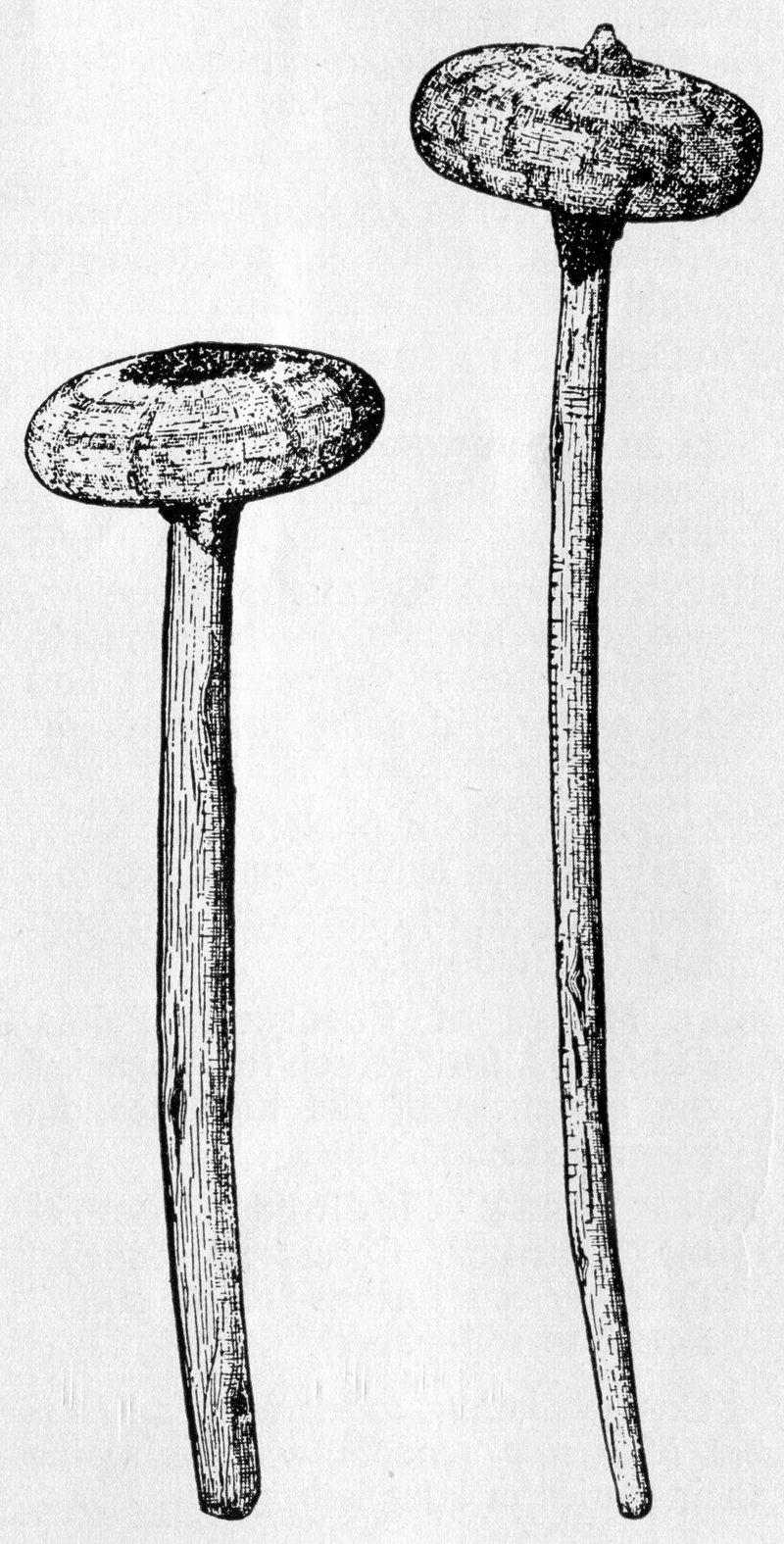|
|
Hasley Canyon | Castaic Junction

Click image to enlarge Desert magazine, January 1952 — Drawing of ritual staffs (perforated stones affixed to approx. 18-inch wooden handles), used to illustrate Richard Van Valkenburgh's story about his rediscovery of Bowers Cave. Original caption reads: "These two specimens of the rare "perforated stones" in their mountains [sic] on exhibit at the Los Angeles County Museum. Smithsonian Institution drawing." This drawing first appears in Henry W. Henshaw's 1887 book, "Perforated Stones from California." Henshaw was an ornithologist and naturalist who collected specimens for the Smithsonian. On May 2, 1884, brothers McCoy and Everette Pyle, a pair of young ranchers, stumbled upon Bowers Cave in the Hasley hills behind Castaic. Inside they found a treasure trove of native American artifacts, believed to have been deposited there by Tataviam Indians, the dominant peoples of the Santa Clarita Valley from about A.D. 450 to the early 19th Century. Among the artifacts were nine baskets [Elsasser & Heizer 1963]; 15 complete and another 18 partial flicker (and other) feather bands [ibid.]; 45 bone whistles, various bullroarers and other items [ibid.]; and four ritual staffs or "sun sticks" — perforated stones mounted on 45cm (approx. 18-inch) wooden handles [Johnson: pers. comm. 2013] — which were likely used in the Winter Solstice ceremony [Benson 1997:32]. According to Van Valkenburgh [1952], the Bowers Cave artifacts constituted "some of the most famous Indian material ever to be discovered in the United States" inasumch as the hoard included the only perforated stones that were still attached to their original wooden handles when they were found. Nothing so important had ever been unearthed in connection with the Tataviam. Sold to Dr. Stephen Bowers, for whom the cave was named, most of the collection found its way to the Peabody Museum of American Ethnology at Harvard University. In 1952, the Peabody traded one of the ritual staffs to a museum in Australia [Blackburn & Hudson 1990:45] — traded for what, we don't know —; the bulk of the collection is still at the Peabody. Bowers Cave is located within the boundaries of the Chiquita Canyon Landfill property, near its northeastern border. An approved (2017) landfill expansion was required to avoid the cave and is unlikely to disturb it. Read Van Valkenburgh's 1952 story of his rediscovery of Bowers Cave here. Read Jerry Reynolds' 1984 story about Bowers Cave here.
Image 1952g: 9600 dpi jpeg from magazine page. |
See Also: • Bowers Cave & Other Artifacts Van Valkenburgh Story 
Locator Map

Perkins & Van Valkenburgh
|
The site owner makes no assertions as to ownership of any original copyrights to digitized images. However, these images are intended for Personal or Research use only. Any other kind of use, including but not limited to commercial or scholarly publication in any medium or format, public exhibition, or use online or in a web site, may be subject to additional restrictions including but not limited to the copyrights held by parties other than the site owner. USERS ARE SOLELY RESPONSIBLE for determining the existence of such rights and for obtaining any permissions and/or paying associated fees necessary for the proposed use.








